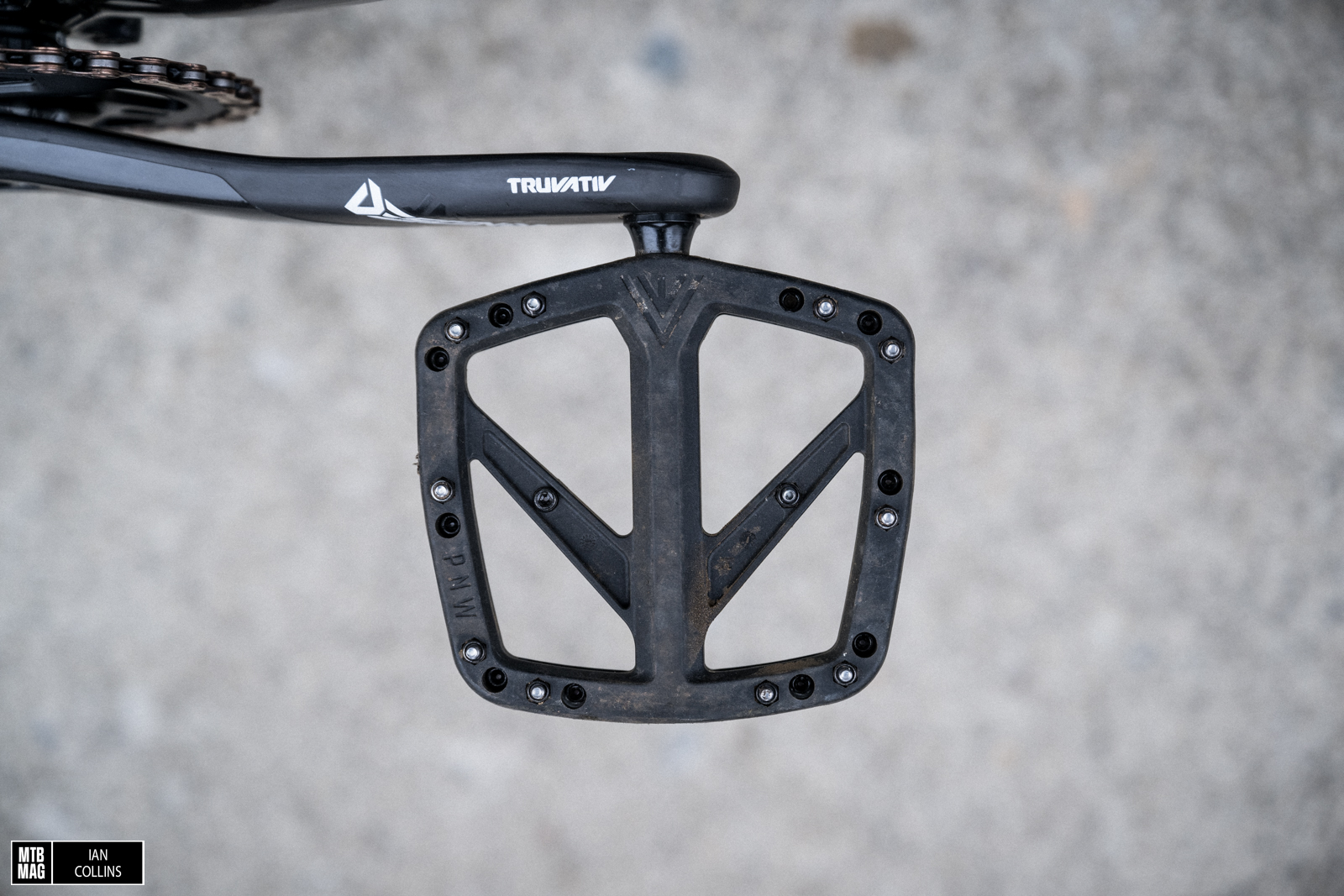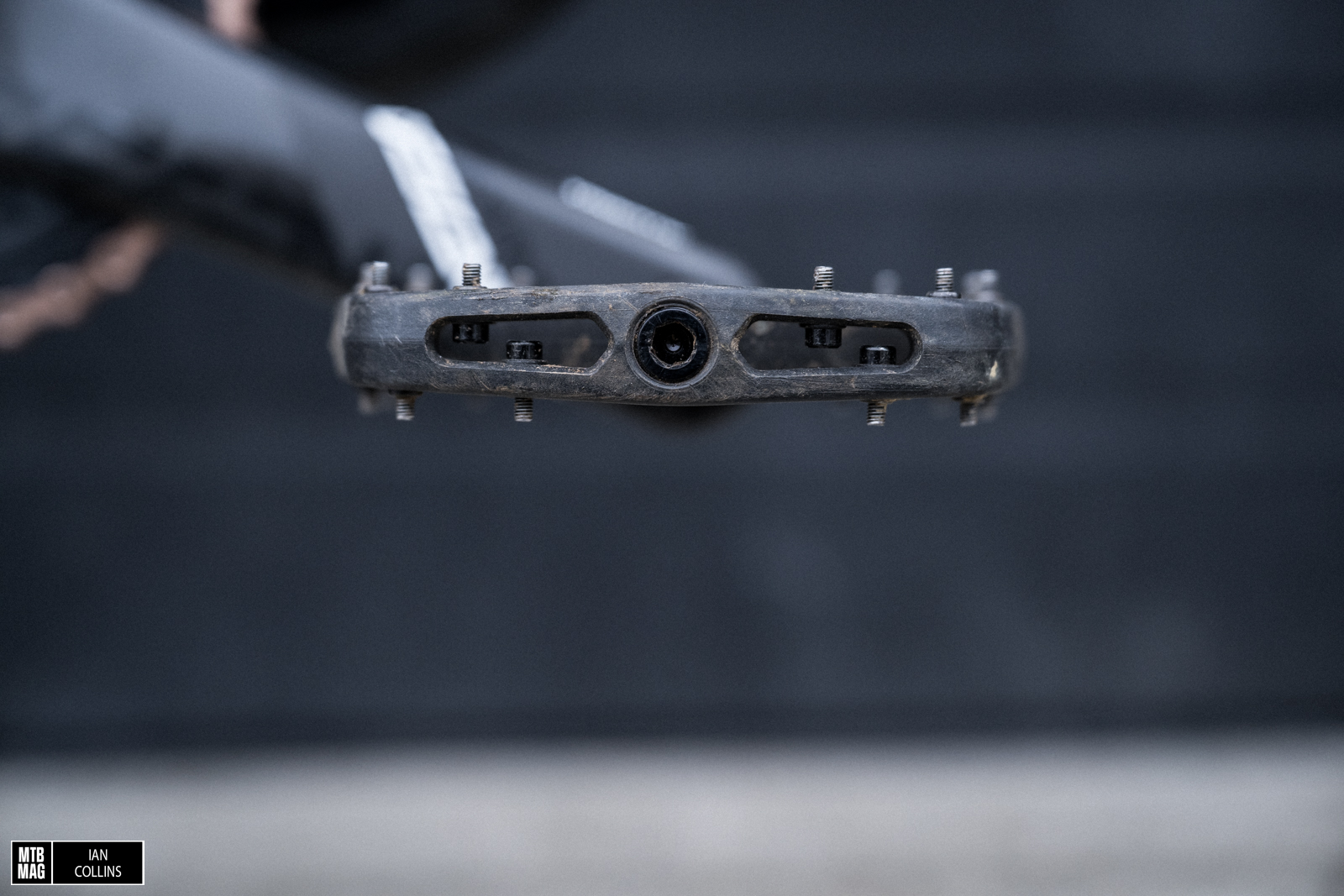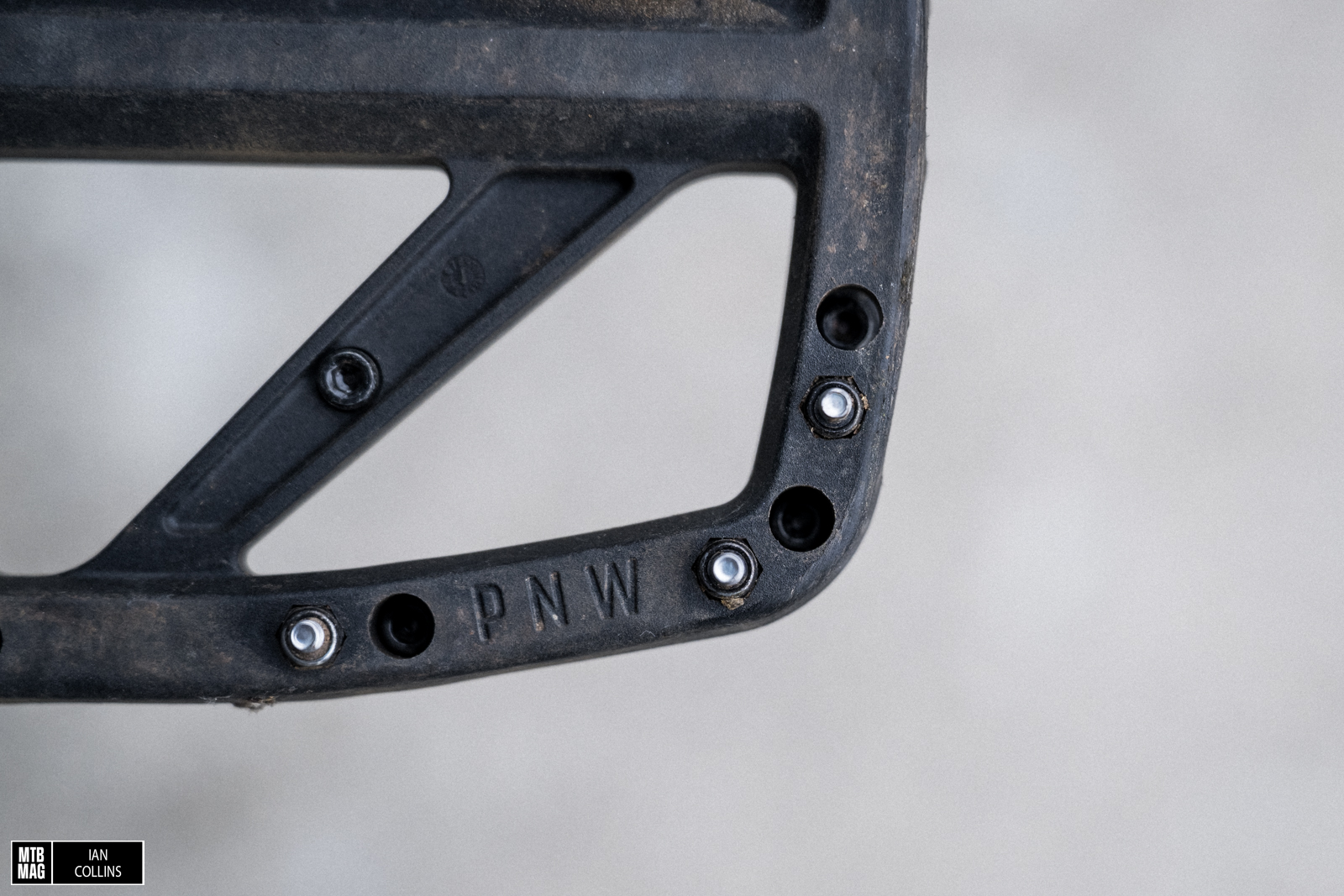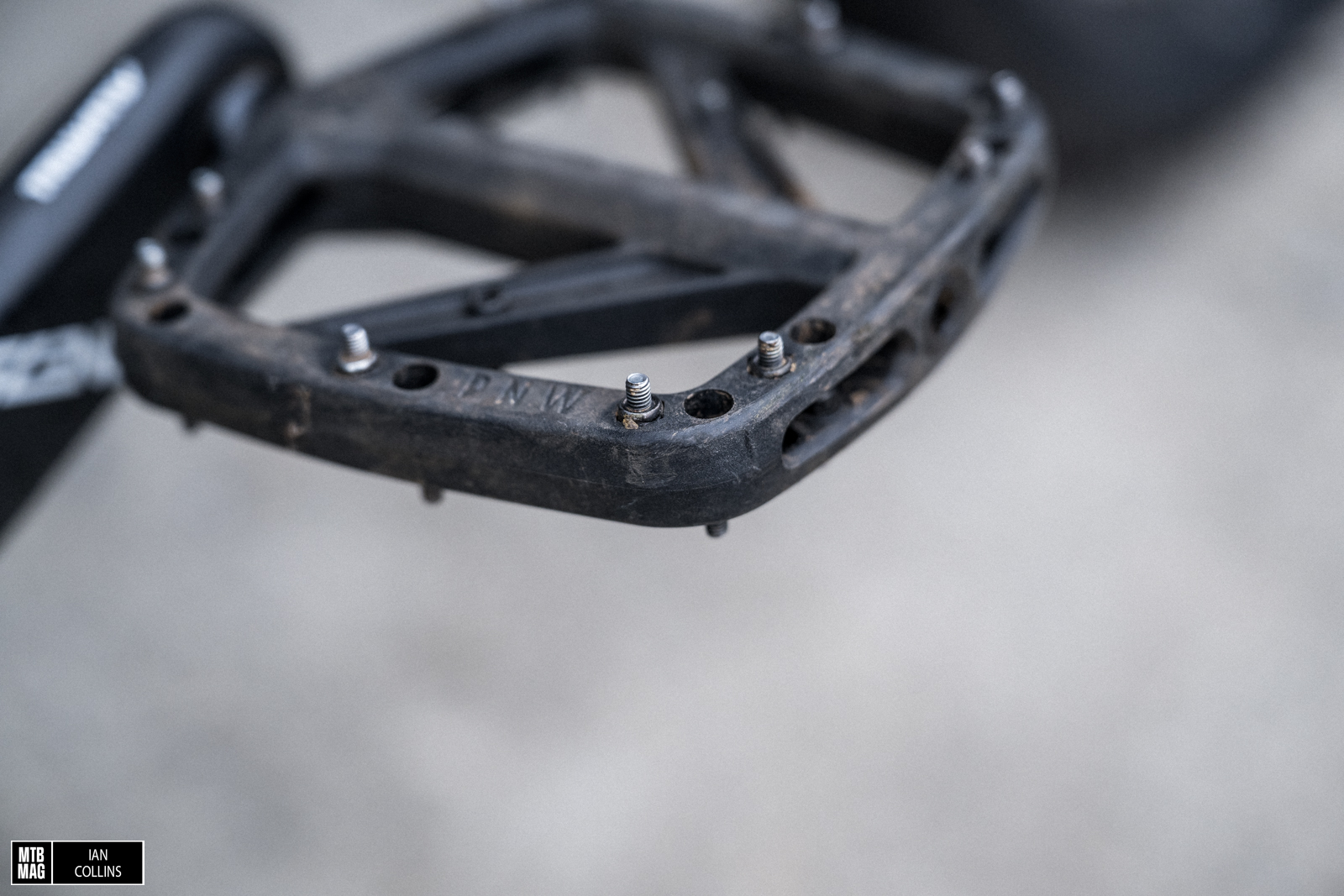[Tested] PNW Range Composite Pedals
Over a good chunk of Summer and Fall, I’ve been riding PNW Components’ high value Range Composite pedals any time that I wasn’t clipped in. As a more affordable follow up to their Loam Alloy pedals, this pair takes the same general shape and profile and wraps it into a lighter and slightly less aggressive offering that costs half as much. Read on to see how they’ve been working out…
Details
- 22 replaceable pins per pedal
- 7 colors
- 390 grams (verified)
- $49.00 USD
- Lifetime warranty
As noted earlier, the general shape and size of the composite pedal is roughly the same as the alloy version. However, there is a different axle design and for what it’s worth, I prefer the design on the composite version as it doesn’t have a bulge toward the crank arms. This means that, inboard, it rolls on a bushing as opposed to a bearing, but rebuild kits are available nonetheless.
The shape of the Range pedals is ever so slightly convex, as you can see above. However, compared with the Loam pedal, less so. To me they felt perfectly flat on my feet.
To keep the traction pins replaceable, PNW opted to use nuts set in the plastic body for the screws to thread into. This means that even under heavy strikes, you are still likely to be able to swap them out as they aren’t threading into softer plastic and thus the threads are likelier to be preserved compared to an aluminum body.
The pins themselves look slightly shorter and less intimidating those on their aluminum counterpart. In any case, with 11 pins spread out per side, you could imagine traction isn’t much of an issue…
On the trail
At 105mm wide and 115mm long, these pedals feel “just right”…they’re not too big and not too small. One aspect I very much liked regarding the shape was how the pedal is longer inboard and shorter outboard. I think this is beneficial for two reasons – first, it matches the curvature of the foot nicely, thus offering better support without unnecessary additional material. Second, since the size is pared down toward the outside, that helps with ground clearance in the turns. Personally, I found the alloy version of this pedal leaned a little too much in the convex direction, but that was not the case with the Range, as they felt flat on my feet and I had no issues with shape regardless of whether I was wearing shoes with firmer or softer soles.
As far as traction is concerned, I would rate the Range pedal as very much in the middle of the road – and that’s a good thing. I’ve ridden pedals that have more traction and longer pins, but that can go too far and enter the realm of a constant fear for the wellbeing of your shins. It can also make it difficult to make critical adjustments to your foot position on trail by being too grabby. Neither of those setbacks applied to these pedals and I found that they land right in an ideal sweet spot. As far as how they fared in nasty conditions, I’ve mainly ridden them in dry, dusty weather but did have a few muddy and snowy days on them as well and found that they cleared gunk efficiently and the traction remained on-point regardless of conditions. As far as durability is concerned I’ve had very good luck thus far with both the pins and axle parts. At the time of writing this article they have no free play and the pins are all in good shape. However, as far as miles are concerned, the bulk of my ride time comes from being clipped in, which means that these haven’t seen an enormous amount of mileage. Rather, enough for me to make some general assessments.
Overall
On balance, I’ve ended up preferring this pedal to its pricier alloy counterpart every step of the way – particularly as regards overall value. The Range composite pedals have a supportive silhouette and a positive on-trail feel without going over the top in terms of pin length or body size. At $49 the value is hard to beat and it’s commendable that in addition to a lifetime warranty, PNW makes available axle rebuild kits and spare pins – especially given that these are a more “budget” offering. This is something that many brands would overlook at this price point, so props are certainly due. If you’re looking for a high value pedal and aren’t averse to going the composite route, it would be foolish to pass these over.
The post [Tested] PNW Range Composite Pedals appeared first on MTB-MAG.COM.






